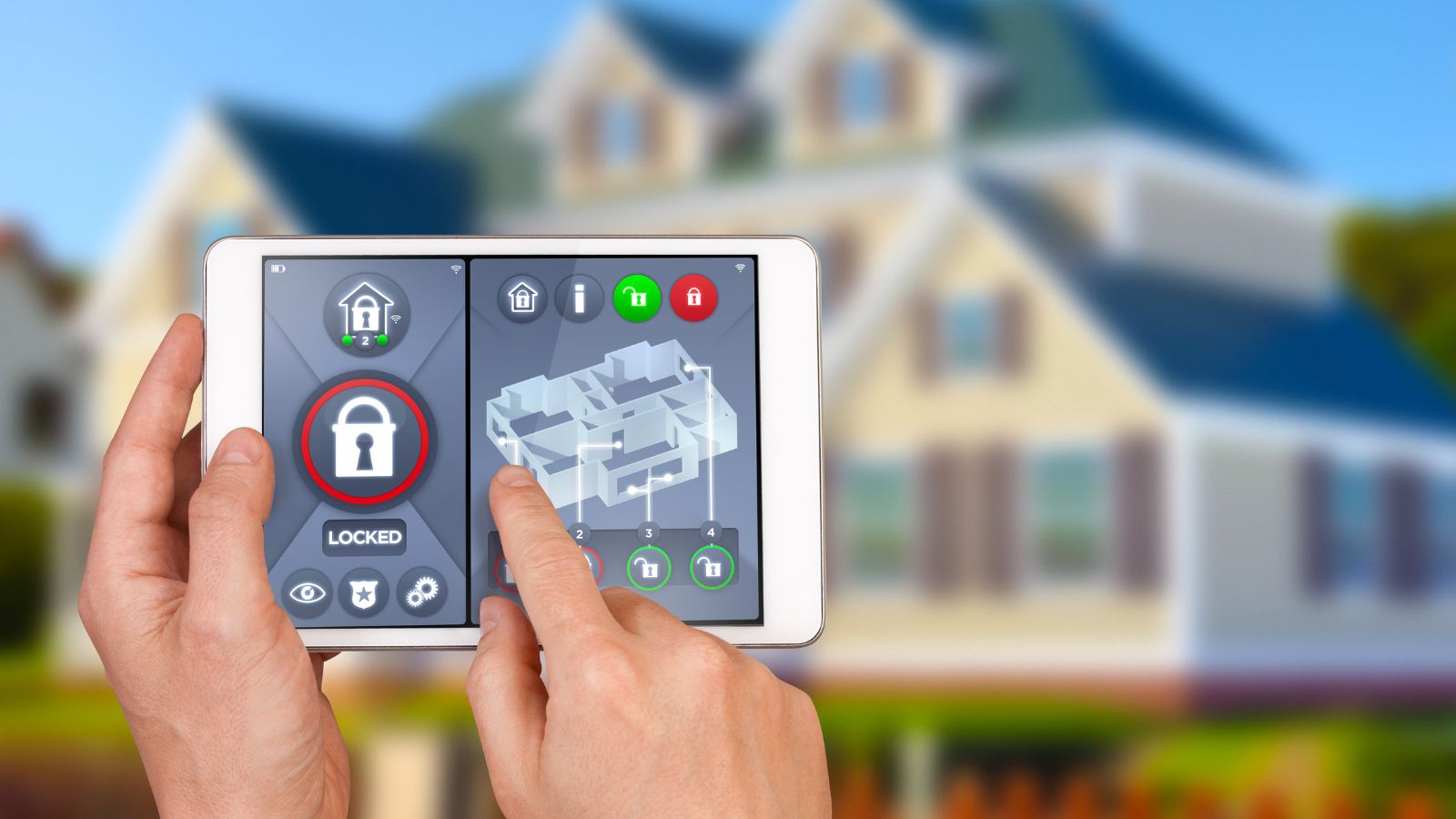Home automation has become a buzzword in modern living, offering homeowners unparalleled control and convenience in managing their spaces. Utilizing smartphone applications to regulate the thermostat and employing remote surveillance systems for home security are examples of how smart technology is transforming our interactions with our surroundings. While the promise of efficiency, cost savings, and personalization is appealing, there are potential drawbacks to consider. By weighing the pros and cons of home automation, homeowners can make informed decisions about integrating this technology into their lives.

Convenience and Seamless Integration
Home automation is synonymous with convenience, offering tools that simplify everyday tasks. Homeowners can manage different functions of their homes using smart speakers, thermostats, and lighting systems with voice commands or a smartphone app. This seamless integration saves time and effort, enhancing the comfort and efficiency of daily routines.
Another standout feature is personalization. Users can set schedules for lighting, temperature, and even appliances to align with their preferences. For instance, smart blinds can open to let in natural light in the morning, while a preset lighting ambiance can create the perfect setting for movie nights. These features elevate the living experience and make homes more adaptable to individual needs.
However, convenience can sometimes come at a cost. Malfunctions or connectivity issues can disrupt these systems, creating frustration. For example, an automated lock that fails to sync with its app could lock a homeowner out, or an internet outage might temporarily render voice-controlled devices inoperable. Additionally, for those less tech-savvy, the learning curve associated with these systems might be intimidating, requiring time and effort to master their functionality.
Compatibility is another consideration. Not all devices work seamlessly together, especially when purchased from different manufacturers. To achieve a truly integrated system, homeowners may need to invest in devices that operate within the same ecosystem, potentially limiting choices or increasing costs.
Energy Efficiency and Sustainability
One of the primary advantages of home automation lies in its potential for energy efficiency. Smart thermostats, for example, can learn a homeowner’s schedule and automatically adjust heating or cooling to optimize energy use. Similarly, smart lighting systems equipped with motion sensors can ensure that lights are only on when rooms are occupied, reducing electricity consumption. These features not only contribute to environmental sustainability but also lead to significant savings on utility bills.
Energy monitoring tools further enhance these benefits. Numerous advanced systems provide comprehensive analyses of energy consumption patterns, enabling homeowners to make well-informed decisions regarding their usage. Smart plugs and power strips can automatically cut power to devices in standby mode, eliminating “phantom energy” waste. Solar-powered smart devices take this a step further, allowing homes to generate and store their own energy while integrating it seamlessly into the system.
However, the upfront costs of implementing home automation can be a barrier. Purchasing devices, upgrading infrastructure, and potentially hiring professionals for installation represent significant initial investments. While these systems can pay for themselves over time through energy savings, the payoff may not be immediate, which could deter budget-conscious homeowners.
Moreover, the effectiveness of energy-saving features depends on proper setup and usage. A poorly configured thermostat or improperly installed solar panel integration may fail to deliver the expected benefits. Regular maintenance, updates, and occasional troubleshooting are necessary to keep these systems running efficiently, adding an extra layer of responsibility for homeowners.
Security and Peace of Mind
Home automation excels in enhancing home security, offering features like smart locks, surveillance cameras, and motion detectors. These tools provide real-time monitoring and alerts, enabling homeowners to respond quickly to potential threats. For instance, smart doorbells equipped with cameras allow users to see and communicate with visitors remotely, whether they’re at work or on vacation.
Automated systems can also simulate occupancy when homeowners are away. By programming lights and TVs to turn on and off at different times, smart technology creates the illusion of someone being home, deterring would-be intruders. Combined with integration into broader security networks, these systems offer a comprehensive approach to protecting your property.
Despite these benefits, there are vulnerabilities to consider. Since smart security systems rely on internet connectivity, they are susceptible to hacking or data breaches. Cybersecurity concerns have become increasingly relevant as hackers find ways to exploit weaknesses in these systems. Protecting your home’s smart devices requires investing in robust encryption, secure passwords, and regular software updates.
False alarms can also be an issue, particularly with motion sensors or doorbell cameras that are overly sensitive. These can lead to unnecessary alerts, which might be frustrating for users or, worse, lead to complacency if ignored too often. Understanding how to fine-tune these settings is crucial for a reliable security experience.
Costs and Accessibility
While the benefits of home automation are enticing, the financial investment required is a key consideration. The cost of devices can vary widely, with advanced systems like whole-home integration or smart appliances being particularly expensive. Additionally, some systems require professional installation, adding to the upfront expenses.
Ongoing costs must also be accounted for. Subscription fees for cloud-based services, maintenance, and occasional device replacements can add up over time. For instance, a smart surveillance system may charge monthly fees for video storage, while a voice assistant might require premium subscriptions for additional features. These costs can make home automation less accessible for those on tight budgets.
Accessibility challenges go beyond finances. While younger, tech-savvy homeowners may find it easy to adopt these systems, older adults or individuals unfamiliar with technology might struggle. Complex interfaces and the need to learn how to manage various apps or devices can make automation daunting for some users. Addressing these barriers often requires choosing user-friendly systems and ensuring adequate support for setup and troubleshooting.
To mitigate costs, many homeowners start small, gradually expanding their systems as they become familiar with the technology. This approach allows for a more budget-friendly entry point while still enjoying the benefits of automation. By carefully assessing priorities and focusing on essential devices, it’s possible to achieve a balance between costs and convenience.
Privacy Concerns and Data Security
The integration of smart technology into homes raises valid concerns about privacy and data security. Many devices collect and store user data to improve functionality, such as learning habits or preferences. While this data enables greater customization, it also creates potential vulnerabilities if not properly protected.
Data breaches are a significant concern, particularly for systems that rely on cloud storage. If security measures fail, unauthorized individuals could access personal information, including usage patterns or video footage. As more devices become connected, the risk of exposure increases, emphasizing the need for encryption and secure networks.
Additionally, there are concerns about how companies handle user data. Some manufacturers collect information for marketing purposes, raising ethical questions about consent and transparency. Homeowners must carefully review privacy policies and choose brands with strong reputations for data security and customer protection.
To mitigate risks, users should prioritize devices with robust encryption, two-factor authentication, and regular software updates. They should also create strong passwords and use secure Wi-Fi networks. While no system is entirely immune to risks, proactive measures can significantly reduce vulnerabilities and protect sensitive information.
The Impact on Home Value
Integrating home automation can significantly impact a property’s value, appealing to tech-savvy buyers and enhancing its marketability. Features like smart thermostats, security systems, and automated lighting are increasingly viewed as desirable upgrades, especially in competitive markets. A home equipped with these systems offers potential buyers the promise of convenience, energy efficiency, and modern living, often leading to higher perceived value and quicker sales.
Smart technology is particularly attractive to younger buyers, who often prioritize innovative features when searching for a home. Millennials and Gen Z, in particular, appreciate the convenience of managing their home’s systems through apps or voice commands. In addition, many of these buyers are environmentally conscious, making energy-saving technologies like solar integrations or programmable devices an important selling point.
However, the impact of home automation on value varies depending on the market and the level of technology integration. While certain upgrades, such as smart thermostats or video doorbells, are relatively inexpensive and offer broad appeal, more advanced or customized systems may not yield the same return on investment. High-end automation solutions, such as centralized home hubs or luxury smart kitchens, can significantly increase a home’s price but might only attract a niche segment of buyers.
It’s also essential to consider technology’s lifespan. Rapid advancements can render some systems outdated in just a few years, potentially diminishing their value. Prospective buyers might view older systems as liabilities, particularly if they require costly updates or replacements.
Ultimately, when thoughtfully implemented, home automation can enhance a property’s functionality and desirability. Homeowners looking to sell may benefit from highlighting these features in listings and staging, showcasing the value they add to everyday living. Contact me when you’re ready to sell or buy a home with the latest smart technology to discuss the next steps.





